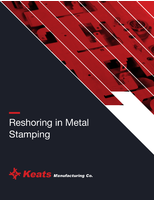ASTM Standard covers test method for nickel alloy analysis.
Press Release Summary:
ASTM E2594, Test Method for Analysis of Nickel Alloys by Inductively Coupled Plasma Atomic Emission Spectrometry, will help users prepare sample/calibration solutions and validate analytical parameter selections made for equipment. Developed by Subcommittee E01.08, it covers testing for aluminum, boron, calcium, copper, magnesium, manganese, phosphorous, tantalum, tin, titanium, tungsten, vanadium, and zirconium. Committee E01 will use method as template for future ICP analytical standards.
Original Press Release:
New ASTM Standard on Analysis of Nickel Alloys Published
Published Test Method Covers Inductively Coupled Plasma Atomic Emission Spectrometry
W. CONSHOHOCKEN, Pa., August 5, 2009 - A new ASTM International standard will help users properly prepare and analyze various nickel-based alloy samples by inductively coupled plasma emission spectrometry.
The standard, ASTM E2594, Test Method for Analysis of Nickel Alloys by Inductively Coupled Plasma Atomic Emission Spectrometry (Performance-Based Method), will assist users in preparing sample and calibration solutions and with validation of analytical parameter selections made for their equipment, in order to help them produce high quality results.
ASTM E2594 was developed by Subcommittee E01.08 on Nickel and Cobalt and High Temperature Alloys, part of ASTM International Committee E01 on Analytical Chemistry for Metals, Ores and Related Materials.
"Many laboratories use inductively coupled plasma emission spectrometry for routine specification acceptance testing of various alloying and trace elements in nickel-based alloys," says Pat Cole, chief chemist, ATI Allvac, and vice chair, Committee E01. "There was not an existing ASTM standard test method applicable for this particular test discipline and matrix."
Cole says that an issue that Committee E01 has dealt with when considering how to approach a test method for ICP analysis is that there are various spectrometer configurations, which necessitated the use of varying sample dilutions and/or analytical parameters such as wavelength. "The new ASTM test method is performance-based and relies more on the demonstrated quality of the test result than on strict adherence to specific procedural steps," says Cole.
Included in the scope of ASTM E2594 is testing for aluminum, boron, calcium, copper, magnesium, manganese, phosphorous, tantalum, tin, titanium, tungsten, vanadium and zirconium. These elements are specified in many material specifications.
"Committee E01 will use this test method as a template to approach development of additional ICP analytical standards for other commodity metals," says Cole. During the most recent committee meeting, Cole says, task groups were formed to address ICP methods for analysis of titanium, aluminum and copper alloys using ASTM E2594 as a template. Laboratories are encouraged to volunteer resources to help with these projects in addition to other Subcommittee E01.08 work on proposed test methods for ICP-mass spectrometric, spark-atomic emission spectrometric and graphite furnace atomic absorption analysis of nickel alloys.
ASTM International standards are available for purchase from Customer Service (phone: 610-832-9585; service@astm.org) or at www.astm.org.
For technical information, contact: Patrick Cole, ATI Allvac, Monroe, N.C. (phone: 704-289-4511, ex. 1317; pat.cole@allvac.com). ASTM Committee E01 meets Nov. 8-11 during November committee week in Atlanta, Ga.
ASTM International welcomes and encourages participation in the development of its standards. ASTM's open consensus process, using advanced Internet-based standards development tools, ensures worldwide access for all interested individuals. For more information on becoming an ASTM member, please contact Thomas O'Toole, ASTM International (phone: 610-832-9739; totoole@astm.org).
Established in 1898, ASTM International is one of the largest international standards development and delivery systems in the world. ASTM International meets the World Trade Organization (WTO) principles for the development of international standards: coherence, consensus, development dimension, effectiveness, impartiality, openness, relevance and transparency. ASTM standards are accepted and used in research and development, product testing, quality systems and commercial transactions around the globe.
Contact:
Barbara Schindler, ASTM International,
100 Barr Harbor Drive, W. Conshohocken, PA 19428
610-832-9603; bschindl@astm.org, www.astm.org




